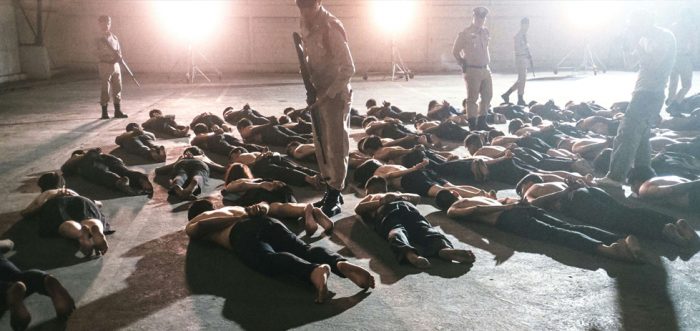
There’s a sense of simplicity that permeates the first scene of By the Time it Gets Dark, as we see a filmmaker and a Thai activist from the 70s, discussing the life of the latter. Anocha Suwichakornpong’s sophomore effort—her first film since 2009’s Mundane History—opens with this vaguely self-referential scene, concerned with the process of filmmaking and inspiration. It’s simultaneously quite a pointed statement to open the film, with their discussion reflecting on the military rule in the country.1 This quiet back and forth, with the filmmaker searching for an unrequited sense of inspiration in her purported muse, becomes a palpable metaphor for the broader thematic scope of Anocha’s work; in essence, a film about the space between the desire for transcendence and its unattainability.
With a great deal of the early scenes shot in the Nan region in Thailand, the film is initially saturated in the greenery of the natural world. “You’re living history”, the filmmaker announces to her subject, before describing the process of turning it into film as “quite mundane”. Despite this praise, the filmmaker isn’t able to turn this living history into film. The inspiration, the process of creativity, is out of reach in the scene for her. It’s a surprisingly honest and transparent dissection of process, trading inspiration for a creative drought.
It’s the solace and quietness that frames the early half of the film that makes the latter sections as dreamlike, awe-inspiring, and as (in a certain way) beautiful as they are. Music isn’t a constant feature in Anocha’s cinema, however, its scarce use is always calculated and measured in a memorable and moving way. In Graceland, a short form the director centred around an Elvis impersonator, the most resonant scenes are the musical moments. While this isn’t always the case with By the Time it Gets Dark, the scenes where Anocha lets her film drift into the surreal are amongst the strongest moments of the film, whether it’s the scene where a character named Peter dresses as a fish to film and advertisement, or the more sombre moment where the crew are editing and find out he’s been killed in a car accident, then choose to continue editing the footage with little deliberation.
The film’s final moments hurtle towards a certain transcendence, without ever truly reaching it. In these scenes, the earlier half of the film becomes far more valuable: it forms the foundation for this eventual drift into a flourishing metaphysical place. As Anocha’s film drifts further away from reality and “living history”, and closer to an abstract, imaginative, and out-of-reach eminence, it emerges as a remarkably complete meditation on the unattainable. There’s a real sense of intimacy in the way in which this plays out, complete with a slight humanistic edge that is sandwiched by technology’s increasing omnipresences in society. It’s a film of contrasts, between awe-inspiring shots of the Thai countryside and glitched out computerised graphics, where the concepts of inspiration and transcendence are tied to complexity, juxtaposition, and irreconcilability.
In early interviews regarding the work, some dating back to when Mundane History was first showing up at festivals, Anocha describes By the Time it Gets Dark as a film about “the life story of a factory worker who is always changing jobs”. In many ways, the statement still holds true, however the manner in which it plays out on screen is only discernible with this context. We see a recurring figure in various jobs that intersect with the film’s many narratives, yearning for the same sense of meaning as the filmmaker in the first scene. The final shots of this young girl, cutting between two conflicting conceptions of transcendence, are almost overwhelming in the way they consume the film; one of the strongest endings of the festival.
Mundane History was by any measure a self-assured and decidedly unique debut, however the conceptual steps forward in vision, scope, pacing, and coherence marked in By the Time it Gets Dark are phenomenal. The depth of the film reflects the lengthy period of production that it emerged from. It’s a film that paints a flawed, enduring image of modernity, of Thailand as a country in a lengthy process of negotiation with its past, and of its increasingly globalised place in the world. The various attempts at connection, tethers of intimacy, and yearning for meaning create a potent image of broader human experience.
